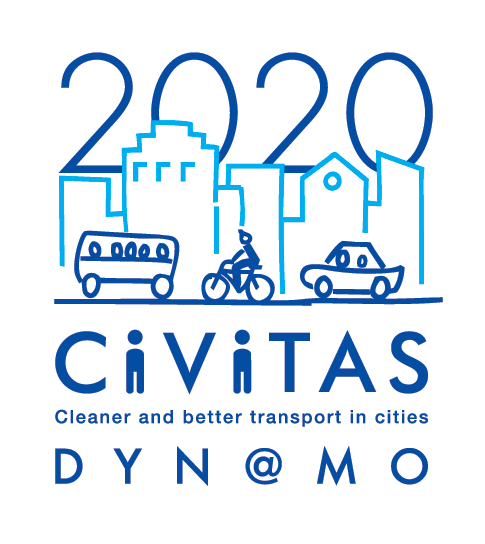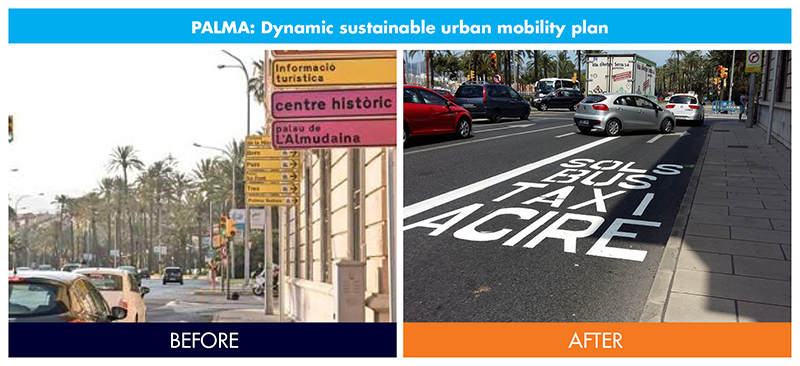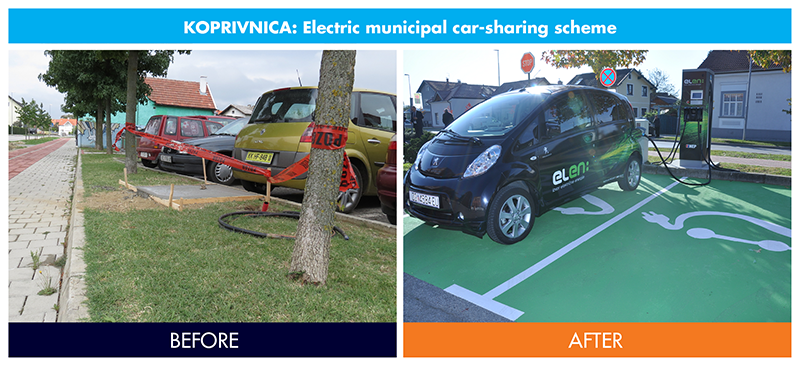CIVITAS DYN@MO helps four cities radically advance sustainable urban mobility

In recent years, the EU-funded CIVITAS Initiative for developing sustainable urban transport has been proud to showcase its successful projects. One of these was the four-year CIVITAS DYN@MO project, coined from the phrase ‘Dynamic citizens @ctive for sustainable mobility’ ending in late 2016 with a myriad of positive outcomes. The project’s two leading cities, Aachen in Germany and Gdynia in Poland, as well as the two ‘learning cities’, Koprivnica in Croatia and Palma de Mallorca in Spain, implemented a set of 30 sustainable urban mobility measures under three distinct themes.
Sustainable urban mobility planning

In 2012 Aachen initiated its grand Sustainable Urban Mobility Plan (SUMP) by not only consulting with transport stakeholders but also the public, thanks to the support of engaging events, surveys and social media. Special focus has been put on sustainable mobility offers for residents of a housing company and the employees of the universities. The RWTH Aachen University managed to reduce car traffic from 58% to 44%.
Gdynia also took its existing SUMP to a new level, integrating web 2.0 applications to facilitate citizen involvement, making it a model for other cities in Poland. Many potential road traffic modifications and public transport lines distribution improvements were analysed and cycling was significantly promoted among citizens. Gdynia also introduced measures to calm traffic in the city centre and made progress in pedestrianizing it.
 In 2015 Koprivnica initiated its SUMP to improve traffic safety and reduce air pollution by developing the city’s first public transport system, including walking, cycling and the use of electric vehicles. It launched a zero-emissions zone on its new university campus with the help of e-vehicles, in addition to establishing an e-bike terminal that was integrated into the city’s bike sharing scheme. These efforts were enhanced by a virtual mobility centre to study public transport at the university, as well as studies on intermodal transport and an integrated ticketing system.
In 2015 Koprivnica initiated its SUMP to improve traffic safety and reduce air pollution by developing the city’s first public transport system, including walking, cycling and the use of electric vehicles. It launched a zero-emissions zone on its new university campus with the help of e-vehicles, in addition to establishing an e-bike terminal that was integrated into the city’s bike sharing scheme. These efforts were enhanced by a virtual mobility centre to study public transport at the university, as well as studies on intermodal transport and an integrated ticketing system.
Palma improved its new SUMP in late 2014 with a target of 40% walking and 5% cycling for commuters, considering as well solutions to accommodate the high number of tourists that visit the island. With respect to cycling and walking, the city built 12 kilometres of additional biking lanes and added 9 new stations and 150 bicycles to the public bicycle scheme Bicipalma. Two walking routes near health care facilities and seven school walking routes were also launched, in addition to new car traffic restrictions at the historic city centre.
Clean and energy efficient vehicles
 Aachen’s electromobility strategy involved intensive research, supporting a new pedelec-sharing scheme and a pedelec delivery service, as well as a first e-car pool for the city administration. The public transport operator ASEAG also started the conversion from a diesel bus fleet to a fully electric bus fleet, with focus on improved electric drives and emissions control.
Aachen’s electromobility strategy involved intensive research, supporting a new pedelec-sharing scheme and a pedelec delivery service, as well as a first e-car pool for the city administration. The public transport operator ASEAG also started the conversion from a diesel bus fleet to a fully electric bus fleet, with focus on improved electric drives and emissions control.
Gdynia on the other hand expanded its highly popular and very innovative Li-Ion hybrid trolleybus service with the introduction of a new line. The city’s innovations include the ability of the new trolleybus to run off-grid for a limited period of time, as well as achieved energy savings of 20%, equivalent to €6,000 per year.

A new municipal electric car-sharing scheme emerged in Koprivnica, featuring one hybrid, one plug-in hybrid and five electric vehicles, along with five e-charging stations and an online registration system. In parallel the city introduced a public e-bus line with two electric minibuses, which brought a reduction in emissions of 20%.
 Palma in turn made significant progress in terms of clean and energy efficient vehicles by introducing less polluting vehicles and building a CNG refuelling station, with plans for purifying the biogas recovered from wastewater mud and use it as a fuel. The waste collection public company acquired 8 new CNG trucks and transformed 17 waste collection trucks and 1 van from diesel to CNG. The municipality and its public service companies acquired 13 new electric vehicles while city subcontractors acquired 31 electric vehicles for their fleets. Moreover, Palma offered incentives to users and installed over 50 charging points, removing several barriers for using electric vehicles and conducting dynamic campaigns to promote e-mobility.
Palma in turn made significant progress in terms of clean and energy efficient vehicles by introducing less polluting vehicles and building a CNG refuelling station, with plans for purifying the biogas recovered from wastewater mud and use it as a fuel. The waste collection public company acquired 8 new CNG trucks and transformed 17 waste collection trucks and 1 van from diesel to CNG. The municipality and its public service companies acquired 13 new electric vehicles while city subcontractors acquired 31 electric vehicles for their fleets. Moreover, Palma offered incentives to users and installed over 50 charging points, removing several barriers for using electric vehicles and conducting dynamic campaigns to promote e-mobility.
Deployment of ICT and ITS
 High-tech solutions have become a very important part of urban sustainable mobility. This was demonstrated by Aachen’s multimodal information and routing internet platform, piloting more integrated access to buses and trains. The platform provides real-time data, alternative routes in case of delays, and mobility suggestions, all backed by Twitter interaction and tips from users.
High-tech solutions have become a very important part of urban sustainable mobility. This was demonstrated by Aachen’s multimodal information and routing internet platform, piloting more integrated access to buses and trains. The platform provides real-time data, alternative routes in case of delays, and mobility suggestions, all backed by Twitter interaction and tips from users.
Gdynia has built a multilevel model on the urban transport system, allowing for verification and optimisation of envisaged changes before being implemented. In order to pre-empt damage to road surfaces, Gdynia developed an innovative ITS system to identify overloaded vehicles in circulation. Public transport was also significantly improved by implementing three new HOV/ dedicated bus lanes. Another internet-based innovation in the Baltic city involved the launch of an online platform to consult with citizens and transport stakeholders on mobility issues.
 Boasting positive results of its own, Palma launched its new MobiPalma online platform and mobile phone App with real-time information on buses, traffic, parking, the public bike sharing scheme and charging points for electric vehicles, in addition to interaction with users. The city also introduced a novel parking guidance system for underground carparks, with real-time information regarding parking availability displayed at 18 newly installed street panels. These achievements, together with the improved public transport website and the increased activity in social networks, have successfully reduced congestion and strengthened sustainable mobility.
Boasting positive results of its own, Palma launched its new MobiPalma online platform and mobile phone App with real-time information on buses, traffic, parking, the public bike sharing scheme and charging points for electric vehicles, in addition to interaction with users. The city also introduced a novel parking guidance system for underground carparks, with real-time information regarding parking availability displayed at 18 newly installed street panels. These achievements, together with the improved public transport website and the increased activity in social networks, have successfully reduced congestion and strengthened sustainable mobility.






